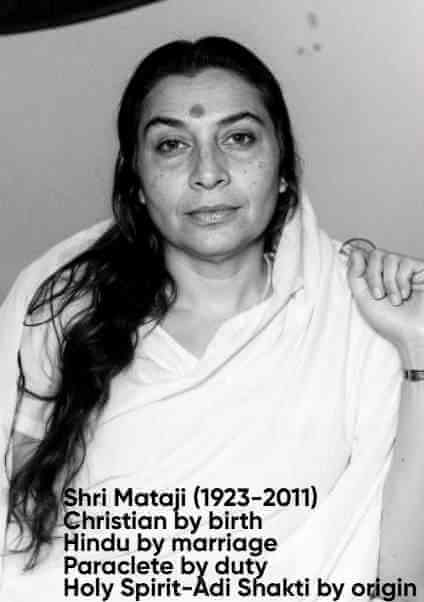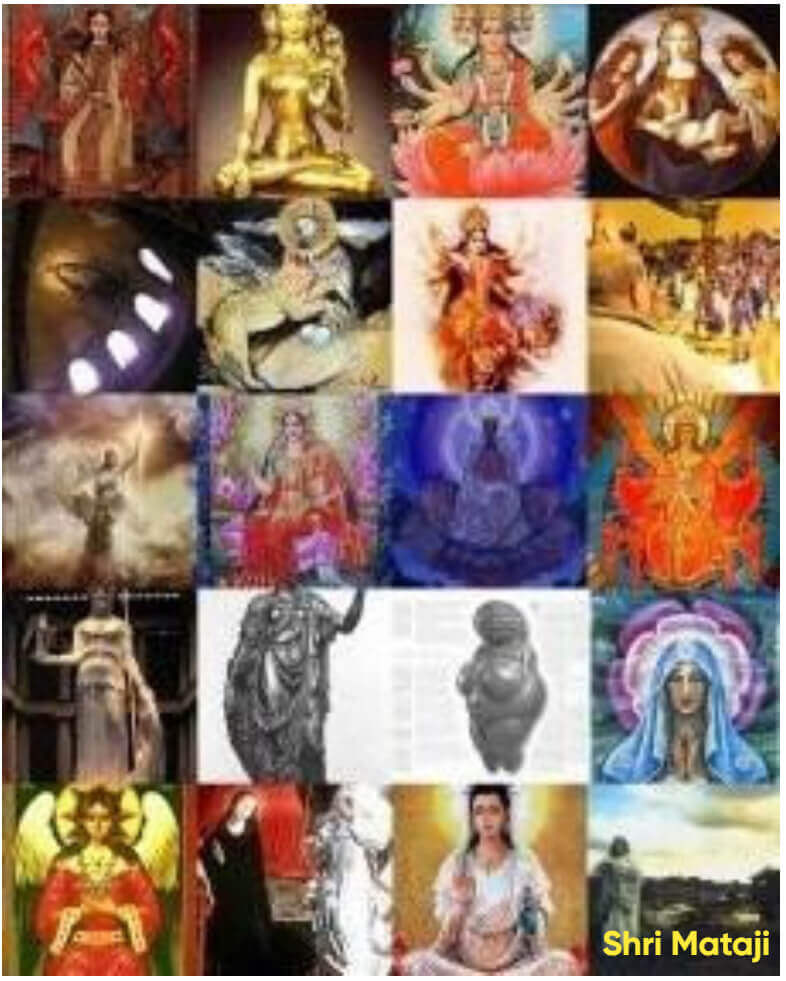The Concept of Shakti: Hinduism as a Liberating Force for Women
Shakti is the liberating essence of Hinduism—empowering women through spiritual authority, cosmic energy, and divine embodiment. This article explores how the reverence for the Divine Feminine offers a path of awakening, equality, and inner transformation. Far from being patriarchal, Hinduism's deepest truths affirm the sacredness of female energy. Through Kundalini awakening and Self-realization, women reclaim their divine identity as embodiments of Adi Shakti. Shri Mataji's teachings confirm that the feminine principle is not subordinate—it is supreme. In this Light, liberation is not granted—it is remembered. Shakti is the soul's birthright, and the future of spiritual evolution is feminine.
Abstract
This paper explores the concept of Shakti in Hinduism as a metaphysical and theological principle that redefines the relationship between divinity, power, and gender. In contrast to the patriarchal traditions that have dominated Western religious history, Hinduism presents the feminine as the very embodiment of divine energy and creative potency. Through the lens of Shakti, womanhood becomes not a derivative or subordinate manifestation of the divine, but its active, dynamic, and sustaining force. The study examines the philosophical foundations of Shakti in Vedic, Pura?ic, and Tantric traditions; analyzes its cultural and social implications for women in Hindu civilization; and considers its relevance for contemporary feminist theology and ecological consciousness. The thesis advanced here is that the Shakti principle, properly understood, offers a vision of spiritual equality and liberation that transcends gender and reorients human consciousness toward the divine unity of power and compassion.
1. Introduction: Rethinking Power and the Feminine
The history of religious thought, especially in the West, has long been marked by the exclusion or subordination of the feminine. Within Judeo-Christian theology, the divine has been primarily conceived in masculine terms — as Father, Lord, or King — thereby establishing a symbolic hierarchy that often extended into the social, political, and spiritual structures of civilization. The consequences of this imbalance have been profound: the marginalization of women, the desacralization of nature, and the distortion of human power into domination rather than creativity.
Hinduism, however, offers a radically different ontological grammar of the sacred. In the concept of Shakti — the divine feminine energy — power is not an attribute of God but God Herself. The feminine is not a secondary emanation; it is the very ground of being and becoming. As Shakti, the universe is alive with consciousness and dynamism. Every act of creation, preservation, and transformation is the play of the Divine Mother. This perspective, deeply embedded in Hindu metaphysics and ritual life, offers an alternative model of divinity that integrates power with nurturing, transcendence with immanence, and the sacred with the everyday life of women.
2. The Metaphysics of Shakti: Power as the Feminine Principle
The Sanskrit term sakti derives from the verbal root sak, meaning to be able,
to act,
or to empower.
It denotes both capacity and causality — the inherent potency through which all phenomena arise and function. In the Vedas, Shakti is both cosmic and personal: the fire's heat, the sun's brilliance, the river's flow, and the vital energy (pra?a) animating all life. She is thus both the metaphysical substratum and the phenomenological dynamism of existence.
Philosophically, Shakti finds resonance in several Indian schools. The Mima?sa school views it as the inherent efficacy of ritual and sound; the Nyaya interprets it as the operative potency in causation; and Vedanta understands it as Brahman's active aspect — the manifestation of the Absolute through creation. However, it is in Sa?khya and Tantra that the metaphysics of Shakti achieves full development. Sa?khya's dualism between Prak?ti (nature, the feminine) and Puru?a (spirit, the masculine) lays the foundation for the later Shakta doctrine that the entire cosmos is the self-expression of the Divine Mother. Shakti is not subordinate to Puru?a; rather, she is its dynamic counterpart, without which consciousness remains inert.
In Tantric theology, this relationship becomes the paradigm of divine unity. The inseparable interplay of Shiva and Shakti — consciousness and energy — represents the cosmic dance of stillness and motion, transcendence and immanence. The icon of Ardhanarisvara, half male and half female, visually communicates this metaphysical truth: that the divine is both masculine and feminine, indivisible and whole.
3. Shakti in Texts and Traditions
The Rig Veda already celebrates the feminine divine in hymns such as the Devi Sukta, where the Goddess proclaims: I am the Sovereign Queen, the gatherer-up of treasures, most thoughtful, first of those who merit worship
(RV 10.125). Here, the Goddess identifies Herself with the cosmic power that sustains gods and humans alike — a theological assertion of feminine primacy unparalleled in ancient religious literature.
The Upanishads develop this insight philosophically, identifying Mahasakti with Brahman, the absolute consciousness. Later, in the Pura?as — especially the Devi Bhagavata Pura?a and the Devi Mahatmya — Shakti assumes a personal form as the Mahadevi, the Supreme Goddess who creates, sustains, and dissolves the cosmos. She is at once transcendent and immanent, terrible and tender, the destroyer of ignorance and the mother of wisdom. The Tantric corpus, particularly the Sri Vidya and Kalika Pura?as, systematizes this theology into ritual and soteriological practice, wherein liberation (mok?a) is attained through the awakening of the inner Shakti, the Kundalini.
4. The Cultural and Social Dimensions of Shakti
While the metaphysical dimension of Shakti is central, its sociocultural impact has been equally transformative. In Hindu civilization, womanhood has been traditionally viewed as the vessel of divine energy. The reverence accorded to mothers, the presence of female deities in every household, and the role of women in maintaining ritual and moral order reflect this theological esteem. As Klaus Klostermaier (1994) notes, Traditional Hinduism is still strongly supported by women; women form the largest portion of temple-goers and keep traditional domestic rituals alive.
Historical and literary sources provide ample evidence of women's spiritual authority. Vedic seers such as Gargi and Maitreyi engaged in profound philosophical dialogue; medieval saints like Andal and Mirabai led devotional movements; and modern figures such as Anandamayi Ma and Amritanandamayi embody the living Shakti in contemporary India. Far from being passive, these women were active spiritual reformers and exemplars of divine realization.
In contrast to the Western trajectory — where female leadership in religion was largely suppressed until recent centuries — Hinduism has preserved a continuous lineage of women mystics, teachers, and ascetics. This continuity underscores the liberating potential of a worldview that locates the divine not in gender but in consciousness and energy.
5. Shakti and Feminist Theology
Modern feminist theology has increasingly turned to Shakti as a paradigm for reimagining divine power. Thinkers such as Vandana Shiva and Eleanor Rae have interpreted the Shakti principle as a call to restore balance between humanity and nature, between masculine domination and feminine creativity. Shiva (1989) argues that the ecological crisis and the subjugation of women share a common root — the suppression of the feminine principle.
By reclaiming Shakti, both women and men participate in the healing of a fragmented world.
In this sense, Shakti is not merely a theological idea but an ecological and ethical force. She invites humanity to see divinity in all life, to perceive the Earth as the living body of the Goddess, and to act in harmony with the rhythms of creation. The spiritual awakening of Shakti within — described in Kundalini Yoga as the ascent of the inner energy toward union with Shiva — becomes a metaphor for the collective awakening of consciousness toward unity, compassion, and empowerment.
6. Conclusion: The Reemergence of the Divine Feminine
The concept of Shakti, far from being an esoteric Hindu doctrine, carries universal implications for the future of religious thought and human civilization. By affirming that the ultimate reality is both energy and consciousness, both mother and father, Hinduism provides a metaphysical foundation for gender equality and spiritual liberation. It recognizes the feminine not as the other
of the divine but as its active, indispensable essence.
As the world grapples with crises of ecological imbalance, moral decay, and spiritual alienation, the reawakening of Shakti offers a path of reconciliation — between humanity and nature, between man and woman, between matter and spirit. The liberation of women is inseparable from the liberation of the feminine divine. To honor Shakti is to honor life itself.
References
- Bhattacharyya, N. N. (1973). History of the Sakta Religion. New Delhi: Munshiram Manoharlal.
- Brown, C. M. (1990). The Triumph of the Goddess. Albany: SUNY Press.
- Coburn, T. B. (1984). Devi-Mahatmya: The Crystallization of the Goddess Tradition. New Delhi: Motilal Banarsidass.
- Dev, U. (1987). The Concept of Sakti in the Puranas. New Delhi: Nag Publishers.
- Gadon, E. W. (1989). The Once and Future Goddess. San Francisco: HarperCollins.
- Klostermaier, K. (1994). A Survey of Hinduism. Albany: SUNY Press.
- Rae, E. (1994). Women, the Earth, the Divine. Maryknoll, NY: Orbis Books.
- Shiva, V. (1989).
Development, Ecology and Women.
In J. Plant (Ed.), Healing the Wounds: The Promise of Ecofeminism. Philadelphia: New Society Publishers. - Goswami, S. (1985). The Divine Consort: Radha and the Goddesses of India. Boston: Beacon Press.


